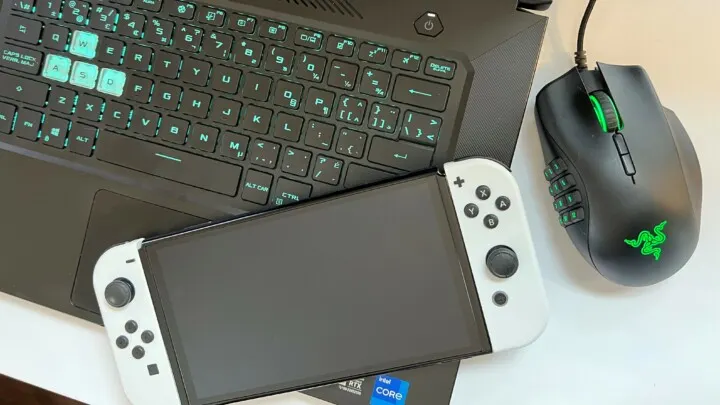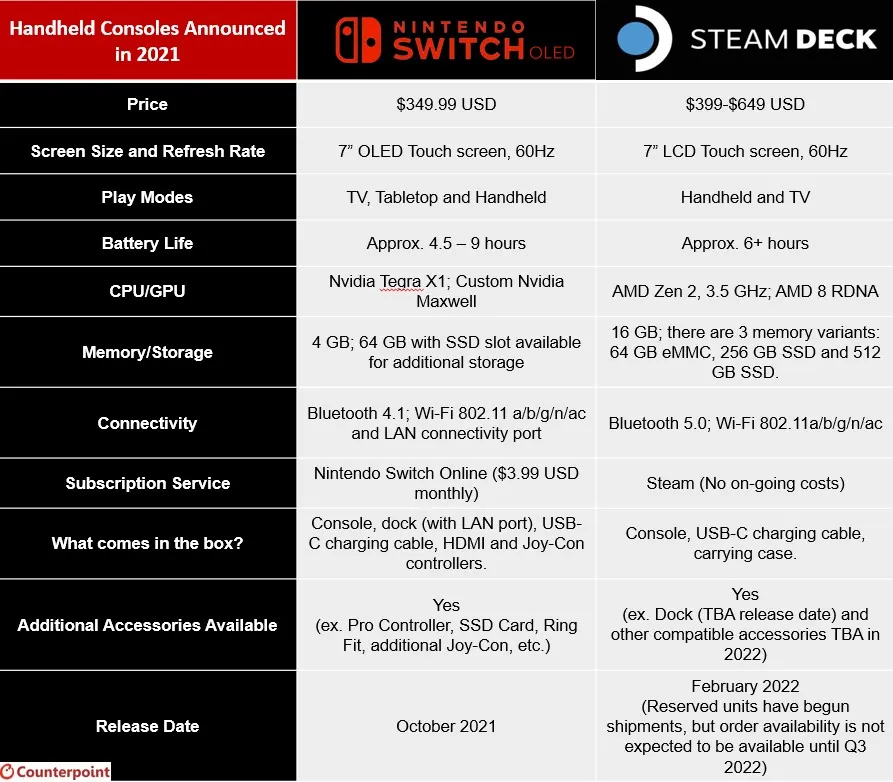Compared to the last few years, 2021 saw much more activity in terms of handheld announcements on new devices, new technical standards and new sales records. Seven years ago, the popular Sony PSP (PlayStation Portable) was discontinued after selling over 73 million units in 10 years. Nintendo too discontinued numerous handhelds over the years. But why are handhelds again gaining popularity in these times of connected home consoles and PC gaming? It is the technological advancements and increased interest in mobile gaming that have brought handheld gaming back into focus since the last year. The ability to save hundreds of dollars by opting for a handheld device to play a new game with new graphics standards has also appealed to the new-age gamers.
Fall and re-emergence of handhelds
The Nintendo Switch was the most sold console globally in 2021 with around 25 million units. The crossover console also released a new edition of the Switch family with the Switch OLED, which features a bigger and brighter screen, a sturdier dock with a LAN port for high-speed gaming, and larger storage. These technological boosters and quick upgrades are the reasons why the Switch model is doing so well and exactly why the PSP had a rather large falling-off in the gaming market.
The PSP had to compete with advanced mobile gaming, but the graphics and tech upgrades to it could not hold up. But Sony’s latest graphics capabilities combined with the Switch’s popularity could put it back in the realm of possibility. Another new feature that will be required for the comeback device to succeed is the ability to withstand cloud and digital download gaming, as many game developers are now moving to streaming platforms. In the absence of these enhancements, the home console and PC gaming will continue to triumph in the overall user experience.
Outlook for handhelds
Even as new technological standards are being set for handhelds, the next step will be to make the wider scope of gaming accessible in this format, including PC gaming. This segment has already been penetrated by the world of mobile gaming through smartphones. OEMs are pushing up and advertising refresh rates and display resolutions aggressively to appeal to this rising market. Brands like Asus and Lenovo have been topping the market for the phones targeted at the gaming segment.
Although smartphones are a good all-in-one option for gaming, there are still technological and ergonomic restrictions that cannot be removed in the mobile phone format. On the other hand, developments in handheld PC gaming devices have been on the rise, the most anticipated device being the Valve Steam Deck. The success of the handheld PC device will be to make the user experience close enough to a full PC set-up, which will make gamers realize that saving money on the handheld device is worth the inevitable downgrades in gaming. Nintendo has been able to balance this need for quality gaming in a handheld, but it is still not enough for more dedicated gamers who often do complex gaming. In order to be a successful addition to the gaming market, the Valve Steam Deck and successors will need to appease a more niche market that requires higher demands from the hardware and software for optimal gaming.

